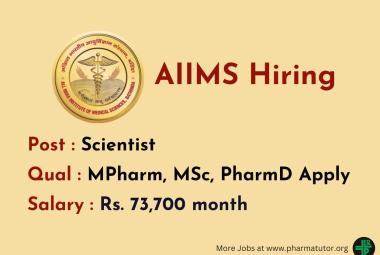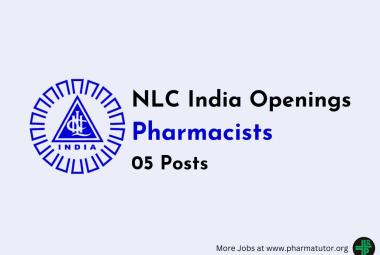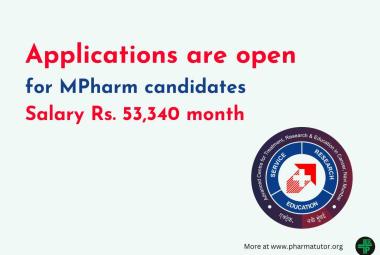 About Authors: Amitesh Kumar Palo*1, Birendra Kumar Pattanaik2, Arun Kumar Dash3.
About Authors: Amitesh Kumar Palo*1, Birendra Kumar Pattanaik2, Arun Kumar Dash3.
1College of Pharmaceutical Sciences, Mohuda, Berhampur, Odisha
2Gaytri Institute of Pharmaceutical Sciences, Gunupur, Odisha.
3Royal College of Pharmacy and Health Sciences, Andhapasara Road, Berhampur.
ABSTRACT
In the present work, a comparative antimicrobial study of different hypoglycemic drugs (Metformin, Phenformin, Rosiglitazone Pioglitazone)was carried out. The antimicrobial assay was carried out against bacteria and fungi namely Bacillus liceniformis, Escheriaceae coli, Proteus vulgaris, Pseudomonas aeruginosa, Shigella flexneri, Bacillus subtilis, Staphylococcus aurous subsp, Staphylococcus epidermidis by using disc diffusion method. Dilution and Diffusion dilutionmethod were used as standard disk with Ciprofloxacin as the standard drug. The entire procedure can be carried out by inoculation of bacterial strain to the agar media in which the drug solution is added. From this the antimicrobial activity of drug was determined.
[adsense:336x280:8701650588]
INTRODUCTION
Antibiotics are one of our most important weapons in fighting bacterial infections and have benefited the health-related quality of human life. But over the past few decades these health benefits are under threat as the commonly used antibiotics have become less and less effective against certain illnesses not only because many of them produce toxic reactions but also due to emergence of drug-resistant bacteria. Thus it has become essential to investigate newer drugs with lesser resistance. Drugs belonging to different pharmacological classes such as antihistamines (Diphenhydramine, BromodiphenhydramineI, PromethazineII), Psychotropics (PromazineIII, chlorpromazineIV, Fluphenazine, Trifluoperazine), Antihypertensive (Methyl-DOPAV), Local anesthetics (procaine), Hypoglycemic possess powerful antibacterial activity. Such chemotherapeutic agents have been grouped together and are now entitled as “Non- antibiotics”VII, VII. The present paper describes the detailed antimicrobial activity of some Hypoglycemic drugs namely Metformin, Phenformin, Rosiglitazone and Pioglitazone.
MATERIALS AND METHOD
Bacteria: A total of 8 different varieties of both gram positive and gram negative bacteria (listed in table 1) were obtained from M.T.C.C Institute of Microbial Technology, Chandigarh. These were preserved in freeze dried stage. These were of human origin, identified as described by Barrow and FelthamVIII.
Media: A liquid media was prepared which consisted of Beef extract (1 %), Yeast (2%), Peptone (5%), Sodium chloride (5%), Agar (15%), Distilled water (qs. 1 liter). The PH was adjusted to 7.4±0.2 with sodium hydroxide solution.
Preparation and standardization of test Inoculums: Stock culture was obtained by aseptically transferring a loop full of the organism into 100ml. of sterile nutrient broth. These were incubated for 24hr. at 370±1cc. from this one ml of stock culture was aseptically transferedto9ml of sterile water containing 0.05% Tween. This was cyclonised and 1ml was transferred to 9ml of sterile water containing tween80. This was continued to get a1010 dilution. From each of the dilution 0.2ml of the water was spread on sterile agar plates. The plates were incubated for 18hr.at 370C±10C. After incubation the number of colonies from the plate which was cultured from the maximum diluted tube is taken. Then the no. of microorganisms in the stock was calculated & expressed as colony forming unit/ml (cfu/ml).
Preparation of various concentration of drugs: Accurately weighed 50mg of metformin, Phenformin, Rosiglitazone were dissolved in 0.7ml of di-methyl sulphoxide (DMSO) and 50 ml of sterile water to get conc. of 50µg/ml.(stock solution). From the above stock solution 0.05ml, 0.1ml, 0.2ml, 0.3ml, 0.4ml solution was pipetted and was diluted and the volume was made up to 10ml with the nutrient agar which give solution of conc. 50μg/ml, 100μg/ml, 200μg/ml, 300μg/ml, 400μg/ml respectively.
Assessment of the Antibacterial Activity by Using Minimum Inhibitory Concentration (MIC): Measured volume of stock solution of the drug were individually added aseptically to molten nutrient agar in concentration of 50, 100, 200, 300, 400 μg/ml. The agar plate containing drugs were refrigerated over night and subsequently dried for 2 hour at 370C before use. Small squares were demarcated at the back of the agar containing portion of the plate with a marker to specify the actual location for each test organism. The inoculums for determination of sensitivity pattern consisted of one loop full of an over night growth culture of the test organism. The average size of the inoculums was about 105 cells contained in a 2mm diameter standard loop. When the nutrient agar plates containing the drug and also the control plates having equal containing the drug and also the control plates having equal volume of solvent were made ready, the over night groom broth culture of each test organism was spot inoculated by checker-board technique, on the marked area of the plate, these were then incubated for 72 hour at 370CIX.
Determination of zone of inhibition by disc diffusion method: Pure ciprofloxacin was taken as standard antibiotic for comparison of the result. Two sets of two dilutions (100 & 200μg/ml) each of drugs & ciprofloxacin (solvent, DMSO) were prepared in sterile MC-Carteny bottle. Sterile nutrient agar plate were prepared &incubated at 370cfor 24hrs, to check for any short of contamination. Two sterile filter paper discs (Whattman no.1) of 4 mm diameter were soaked in different dilution of the drugs and placed in an appropriate position of the surface of flooded plate, marked as quadrants at the back of the petridishes. The petridishes were incubated at 370cfor 14 hrs and the diameter of zones of inhibition in mm. similar procedure was adopted for the pure ciprofloxacin and the cores providing zone diameter were compared accordingly. The experiment was repeated in triplicate and the average results were noted down.
RESULTS: The minimum inhibitory concentration of Metformin, Phenformin, Rosiglitazone are given in table 2, 3 and 4 respectively. Similarly the zone of inhibition of these drugs is summarized in table 5.
DISCUSSION:
On comparing the result of Zone of Inhibition with standard antibiotic Ciprofloxacin it was found that the antibacterial efficacy of the drugs was having mixed result. Both MIC & ZOI study indicates that the drug was found to be less active in different strain of gram positive and gram negative strain like Bacillus liceniformis, Escheriaceae coli, Proteus vulgaris, Shigella flexmeri, Bacillus subtilis where as it was found to be inactive against the Staphylococcus aureus and Staphylococcus epidemidis . So group of tested gram positive and gram-negative bacterias showed a mixed result against the drug.
TABLES:
TABLE: 1 Variety of bacteria used in test
|
Strains as coded |
Name of bacteria |
Source |
|
A
B
C
D
E
F
G
H |
Bacillus liceniformis * 429
Escheriaceae coli 40
Proteus vulgaris 426
Pseudomonas aeruginosa 424
Shigella flexneri 1457
Bacillus subtilis 441
Staphylococcus aurous subsp.au 87
Staphylococcus epidermidis 2639
|
M.T.C.C
Institute of microbial
Technology,
Chandigarh- 160036,
India |
TABLE: 2 MIC OF METFORMIN
|
Sl No. |
Name of the Bacteria |
Concentration of drug in μg/ml |
|||||
|
50 |
100 |
200 |
300 |
400 |
500 |
||
|
1 |
Bacillus liceniformis |
+ |
+ |
+ |
_ |
_ |
_ |
|
2 |
Escheriaceae coli |
+ |
+ |
+ |
+ |
_ |
_ |
|
3 |
Proteus vulgaris |
+ |
+ |
+ |
+ |
_ |
_ |
|
4 |
Pseudomonas aeruginosa |
+ |
+ |
+ |
_ |
_ |
_ |
|
5 |
Shigella flexmeri |
+ |
+ |
+ |
_ |
_ |
_ |
|
6 |
Bacillus subtilis |
+ |
+ |
+ |
_ |
_ |
_ |
|
7 |
Staphylococcus aureus subsp.au |
+ |
+ |
+ |
+ |
+ |
_ |
|
8 |
Staphylococcus epidermidis |
+ |
+ |
+ |
+ |
+ |
+ |
‘0’=control, ‘+’= growth, ‘_’ = no growth
TABLE 3 MIC OF PHENFORMIN
|
Sl No. |
Name of the Bacteria |
Concentration of drug in μg/ml |
|||||
|
50 |
100 |
200 |
300 |
400 |
500 |
||
|
1 |
Bacillus liceniformis |
+ |
+ |
+ |
_ |
_ |
_ |
|
2 |
Escheriaceae coli |
+ |
+ |
+ |
+ |
_ |
_ |
|
3 |
Proteus vulgaris |
+ |
+ |
+ |
+ |
_ |
_ |
|
4 |
Pseudomonas aeruginosa |
+ |
+ |
+ |
_ |
_ |
_ |
|
5 |
Shigella flexmeri |
+ |
+ |
+ |
_ |
_ |
_ |
|
6 |
Bacillus subtilis |
+ |
+ |
+ |
_ |
_ |
_ |
|
7 |
Staphylococcus aureus subsp.au |
+ |
+ |
+ |
+ |
+ |
_ |
|
8 |
Staphylococcus epidermidis |
+ |
+ |
+ |
+ |
+ |
+ |
‘0’=control, ‘+’= growth, ‘_’ = no growth
TABLE: 4 MIC OF ROSIGLITAZONE
|
Sl No. |
Name of the Bacteria |
Concentration of drug in μg/ml |
|||||
|
50 |
100 |
200 |
300 |
400 |
500 |
||
|
1 |
Bacillus liceniformis |
+ |
+ |
+ |
_ |
_ |
_ |
|
2 |
Escheriaceae coli |
+ |
+ |
+ |
+ |
_ |
_ |
|
3 |
Proteus vulgaris |
+ |
+ |
+ |
+ |
_ |
_ |
|
4 |
Pseudomonas aeruginosa |
+ |
+ |
+ |
_ |
_ |
_ |
|
5 |
Shigella flexmeri |
+ |
+ |
+ |
_ |
_ |
_ |
|
6 |
Bacillus subtilis |
+ |
+ |
+ |
_ |
_ |
_ |
|
7 |
Staphylococcus aureus subsp.au |
+ |
+ |
+ |
+ |
+ |
_ |
|
8 |
Staphylococcus epidermidis |
+ |
+ |
+ |
+ |
+ |
+ |
‘0’=control, ‘+’= growth, ‘_’ = no growth
Table 5: Zone Of Inhibition of Different Drug By Disc Diffusion Method
|
NAME OF BACTERIA |
Zone Of Inhibition in mm. |
|||||||
|
Metformin |
Phenformin |
Rosiglitazone |
Ciprofloxacin |
|||||
|
300 |
400 |
300 |
400 |
300 |
400 |
300 |
400 |
|
|
Bacillus liceniformis |
8 |
12 |
9 |
12 |
9 |
13 |
20 |
22 |
|
Escheriaceae coli |
5 |
11 |
5 |
10 |
6 |
11 |
19 |
20 |
|
Proteus vulgaris |
5 |
10 |
7 |
11 |
7 |
12 |
18 |
21 |
|
P.aeruginosa |
9 |
12 |
11 |
14 |
10 |
13 |
21 |
23 |
|
Shigella flexmeri |
10 |
13 |
10 |
12 |
11 |
14 |
21 |
24 |
|
Bacillus subtilis |
11 |
14 |
9 |
13 |
12 |
15 |
19 |
21 |
|
S. aureus |
6 |
7 |
6 |
8 |
6 |
8 |
18 |
22 |
|
S. epidermidis |
5 |
7 |
5 |
7 |
6 |
9 |
17 |
22 |
REFERENCES:
I. Dastidar SG, Saha PK, Sanyamat B, Chakrabarty AN. Antibacterial activities of Ambodryl and Benadryl. J Appl Bact 1976; 41: 209-214.
II. Chakrabarty AN, Acharya DP, Niyogi DK, Dastidar SG. Drug interaction of some non-conventional antimicrobial chemotherapeutic agents with special reference to Promethazine. Indian J Med Res 1989; 89: 233-237
III. Dash SK, Dastidar SG, Chakrabarty AN.Antimicrobial activity of Promazine Hydrochloride. Indian J Exp Biol 1977; 15: 324-326.
IV. Molnár J, Mandi Y, Király J. Antibacterial effect of some phenothiazine compounds and R-factor elimination by chlorpromazine. Acta Microbiol. Acad Sci Hung 1976; 23: 45-54.
V. Dastidar SG, Mondal U, Niyogi S, Chakrabarty AN. Antibacterial property of methyl-DOPA and Development of cross-resistance in m-DOPA mutants. Indian J Med Res 1986; 84:142-147.
VI. Chakrabarty AN, Molnár J, Dastidar SG, Motohashi N.(Eds) Non-antibiotics: A new class of unrecognised antimicrobics: National Institute of Science Communication, New Delhi. 1998.
VII. Kristiansen JE. The antimicrobial activity of non-antibiotics. Acta Path Microbiol Scand 1992; 100 (Suppl.):7-19.
VIII. Barrow GI, Feltham RKA. Cowan and Steel’s Manual for the identification of medical bacteria.(Cambridge University Press, Cambridge, U.K) 1993
IX. National Committee for Clinical Laboratory Standards. Methods for Dilution in Antimicrobial Susceptibility Tests. Approved Standard M2-A5. NCCLS, Villanova, PA 1993.
Reference ID: PHARMATUTOR-ART-1037
FIND OUT MORE ARTICLES AT OUR DATABASE









